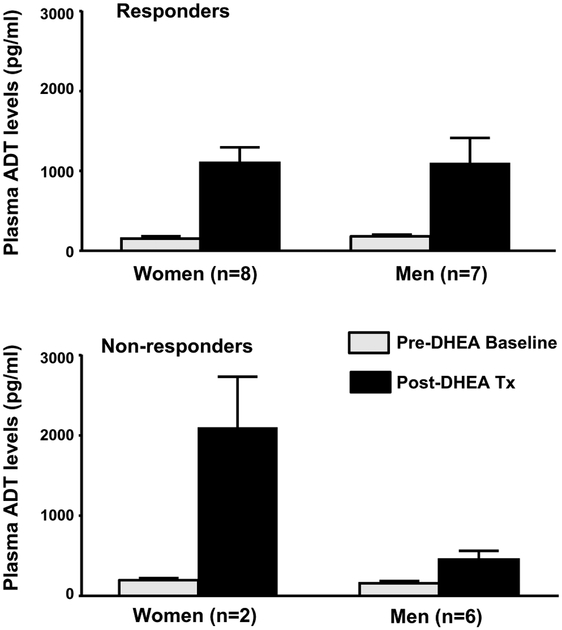Fig. 2.
Plasma androsterone (ADT) levels in women and men with midlife-onset depression treated with DHEA: association between mood response characteristics and plasma ADT–Mean (SE). After DHEA treatment, both men and women who met our criteria for mood response had a significant increase in ADT plasma levels from baseline to the end of DHEA treatment that was of a similar magnitude (t19=4.4, p<0.01, both comparisons). There was no significant difference in week 6 DHEA plasma ADT levels between men and women (t38=0.03, p=ns). In contrast, non-responding men did not show a significant increase in week 6 of DHEA treatment compared with baseline (t19=1.2, p=ns) and non-responding women showed a greater increase than women responders (women responders compared with non-responders, t38=3.0, p<0.05); however, there were only two women non-responders. In both men and women, plasma ADT levels at baseline prior to treatment were not significantly different between responders and non-responders (women: t38=0.13; men: t38=0.08; p=ns for both comparisons)

